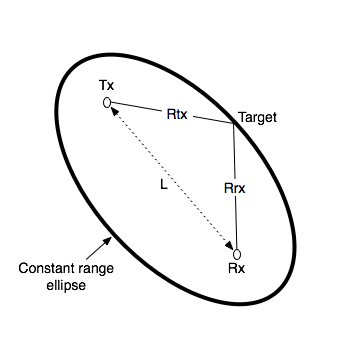.
.
On Saturday, March 8, 2014, the Malaysia Airlines Flight 370 (MH370) took off from the Kuala Lumpur International Airport at 00:41 MST, with 239 people, including 12 crew members, on a scheduled six-hour flight to Beijing. About two hours later, the aircraft was last seen on Air Traffic Control (ATC) radar at 02:40 MST. After that the aircraft ceased all communications, and the transponder signal was lost just before tracking was passed off to the Ho Chi Minh Area Control Center in Vietnam. Airline authorities in Thailand and China informed their Malaysian counterparts that the aircraft had not entered their airspace.
From then on Malaysia Airlines Flight MH370 has been listed as missing. No one knows about its whereabouts. It has just vanished into thin air.
Theories such as hijacking, disintegration in midair, missile attack, and so on, are being expounded by pundits and amateurs for the plausible disappearance of the Malaysia Airlines Flight MH370.
On Thursday, March 13, 2014, a US official said during his brief on the search that Malaysia Airlines Flight MH370 sent signals to a satellite for four hours after the aircraft went missing. This was an indication that the missing aircraft was still flying for hundreds of miles or more after it was last contacted by ground controllers.
The Boeing Company offers a satellite service that can receive a data from an aircraft during its flight about its functioning and relay the information to the plane’s home base to help provide information before it lands on whether maintenance work or repairs are needed. Though Malaysia Airlines did not subscribe to that service, their aircraft still had the capability to connect with the satellite and was automatically sending pings to it to establish contact.
“It’s like when your cellphone is off, but it still sends out a little ‘I am here’ message to the cellphone network,” the official said. “That’s how sometimes they can triangulate your position even though you’re not calling because the phone every so often sends out a little bleep. That’s sort of what this thing was doing.”
However, there was no comment from Boeing.
Messages involving a different, more rudimentary data service also were received from the airliner for a short time after the plane’s transponder – a device used to identify the plane to radar – went silent, the official said.
A transponder is a radio transmitting device in the cockpit used to identify the aircraft to the ground radar with a four-digit identifying code known as the squawk code entered by the pilot for each flight. The transponder also helps air traffic controllers on the ground to ascertain the aircraft’s position, its altitude, speed, and direction.
There are codes for different situations: 7500 for a hijacking, 7600 for communications failure, etc.
A switch on the transponder can be moved to “ON” or “SBY” (standby) or “ALT” (altitude). Manually one can also pull the circuit breaker to turn off a transponder.
A transponder would be turned off during a normal flight if another aircraft gets closer while approaching an airport. The Air traffic controllers may then ask the pilots to switch off the transponders or to move the switch to SBY. At times the pilot might turn off the transponder if it sends faulty information. Even if the transponder is switched off the aircraft will still be visible on primary radar unless it gets below the radar’s visible range.
If the plane had disintegrated during flight or had suffered some other catastrophic failure, after the aircraft was last seen on Air Traffic Control (ATC) radar at 02:40, all signals – the pings to the satellite, the data messages and the transponder – would have stopped at the same time.
If the plane did not disintegrate during the flight and the transponders on the aircraft were disabled manually, the ground radar can still track the location of the aircraft using “passive radar systems” also known as “passive coherent location” and “passive covert radar.”
Passive radar systems
Conventional radar systems comprise an assembly of transmitter and receiver, sharing a common antenna to transmit and receive signals. The radar dish or antenna transmits pulses of radio waves or microwaves that bounce off any object in their path. The object echoes a tiny part of the wave’s energy to a dish or antenna that is usually located at the same site as the transmitter. The time taken for the pulse to travel to the object and back allows the distance of the object to be determined.
In a passive radar system, there is no dedicated transmitter. Instead, the receiver uses third-party transmitters in the environment, and measures the time difference of arrival between the signal coming directly from the transmitter and the signal arriving via reflection from the object. This allows the bistatic range of the object to be determined.
The term “bistatic range” refers to the basic measurement of distance calculated by a radar or sonar system with separated transmitter and receiver. The receiver measures separately the time for the arrival of the signal directly from the transmitter and the time for the arrival of the reflection from the target, and then measures the time difference between the two. This data defines an ellipse of constant bistatic range, called an iso-range contour, on which the target lies, with foci centred on the transmitter and receiver.

If the target is at range Rrx from the receiver and range Rtx from the transmitter, and the receiver and transmitter are a distance L apart, then the bistatic range is Rrx+Rtx–L. Motion of the target causes a rate of change of bistatic range, which results in bistatic Doppler shift.

On Wednesday, March 12, 2014, the Malaysian military acknowledged that it had recorded radar signals from the location where the missing Malaysia Airlines Flight MH370 was last contacted by ground controllers, hypothetically indicating the aircraft might have changed its path from its northeastward course toward Beijing towards the west.
The Military radar detected an unidentified aircraft at several points, apparently headed west across the Malaysian peninsula and out into the Indian Ocean. The last detected point was hundreds of miles to the west of where search and rescue efforts were initially focused.
On Saturday when the aircraft went missing, the military took no immediate action to investigate the unidentified blips, whose path appeared to take the aircraft near the heavily populated island of Penang.
A senior US official told CNN that Malaysian authorities believe they have several “pings” from the airliner’s Aircraft Communications Addressing and Reporting System (ACARS), transmitted to the satellites in the four to five hours after the last transponder signal, suggesting the plane flew to the Indian Ocean.
The Military officials then realized the significance of blips on their radar.
If Malaysia Airlines Flight MH370 crashed into the vast expanse of the Indian Ocean with depths of more than 23,000 feet (7,000 meters), the task faced by searchers would be indomitable like finding a needle in a haystack.
India joined the multi-national search operations and has stepped up its search deploying three aircraft and three ships in the region around Andaman and Nicobar Islands.
.
.
RELATED ARTICLES
Related articles
- Mystery of Malaysia Airlines Flight MH370 (tvaraj.com)
- Mystery of Malaysia Airlines Flight MH370 – The Search is Still on For Missing Aircraft (tvaraj.com)
- Mystery of Malaysia Airlines Flight MH370 – The Stolen Passports (tvaraj.com)
- Mystery of Malaysia Airlines Flight MH370 – Did the Aircraft Crash into the Sea?(tvaraj.com)
- Mystery of Malaysia Airlines Flight MH370 – Was the Aircraft Hijacked? (tvaraj.com)
- Mystery of Malaysia Airlines Flight MH370 – If Hijacked, Where Did It Go? (tvaraj.com)
- Mystery of Malaysia Airlines Flight MH370 – Airline Ad Is a Hoax (tvaraj.com)
- Mystery of Malaysia Airlines Flight MH370 – Did the Aircraft Fly Towards Palau Langkawi (tvaraj.com)
- Mystery of Malaysia Airlines Flight MH370 – Hypothetical Theories (tvaraj.com)
- Mystery of Malaysia Airlines Flight MH370 – Were There Any Phone Calls from the Aircraft? (tvaraj.com)
- Seismic Activity Detected when Plane Disappeared from Radar (lunaticoutpost.com)
- Malaysia says flight MH370 did not fly for hours after losing contact, China satellite shows no debris (straitstimes.com)
- U.S. Investigators Suspect Missing Malaysia Airlines Plane Flew On for Hours (online.wsj.com)
- Malaysia Airlines flight: new theory emerges on how long plane kept flying (theguardian.com)
- MH370: US confirms possible ‘new search area’ in Indian Ocean – live (theguardian.com)
- Signals on Radar Puzzle Officials in Hunt for Malaysian Jet (nytimes.com)
- Passive radar (en.wikipedia.org)
.



11 thoughts on “Mystery of Malaysia Airlines Flight MH370 – Did the Aircraft Disappear From Radar?”